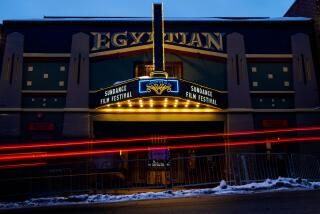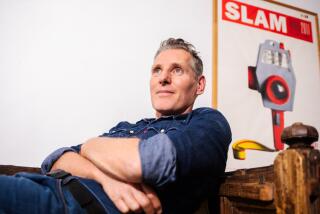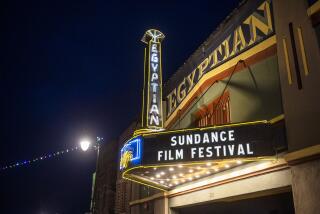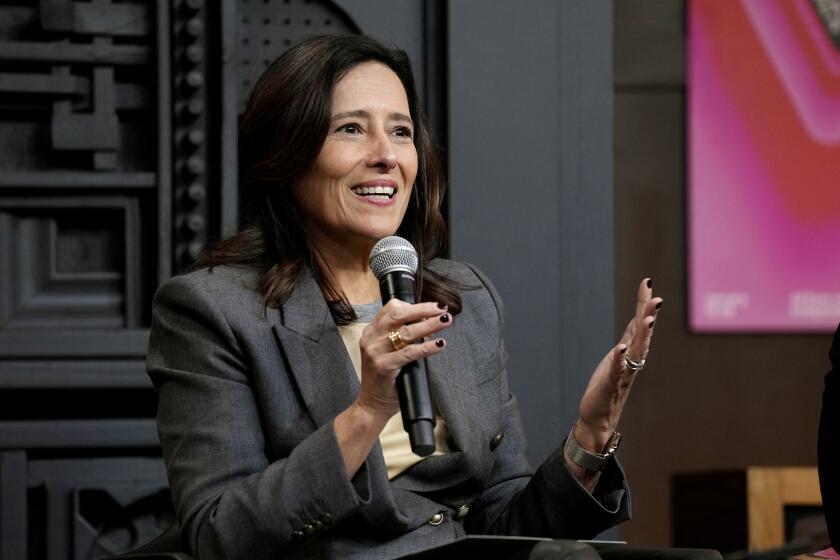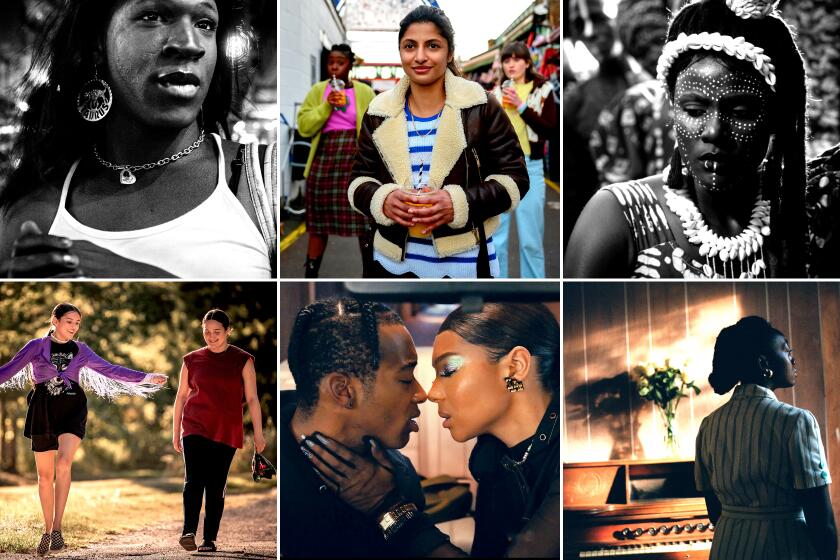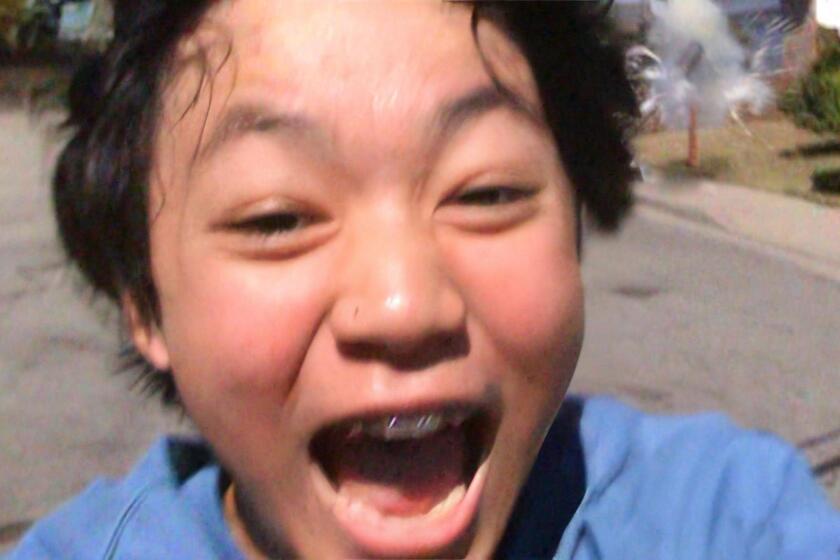The Sundance Film Festival had to be totally reimagined. Tabitha Jackson met the challenge
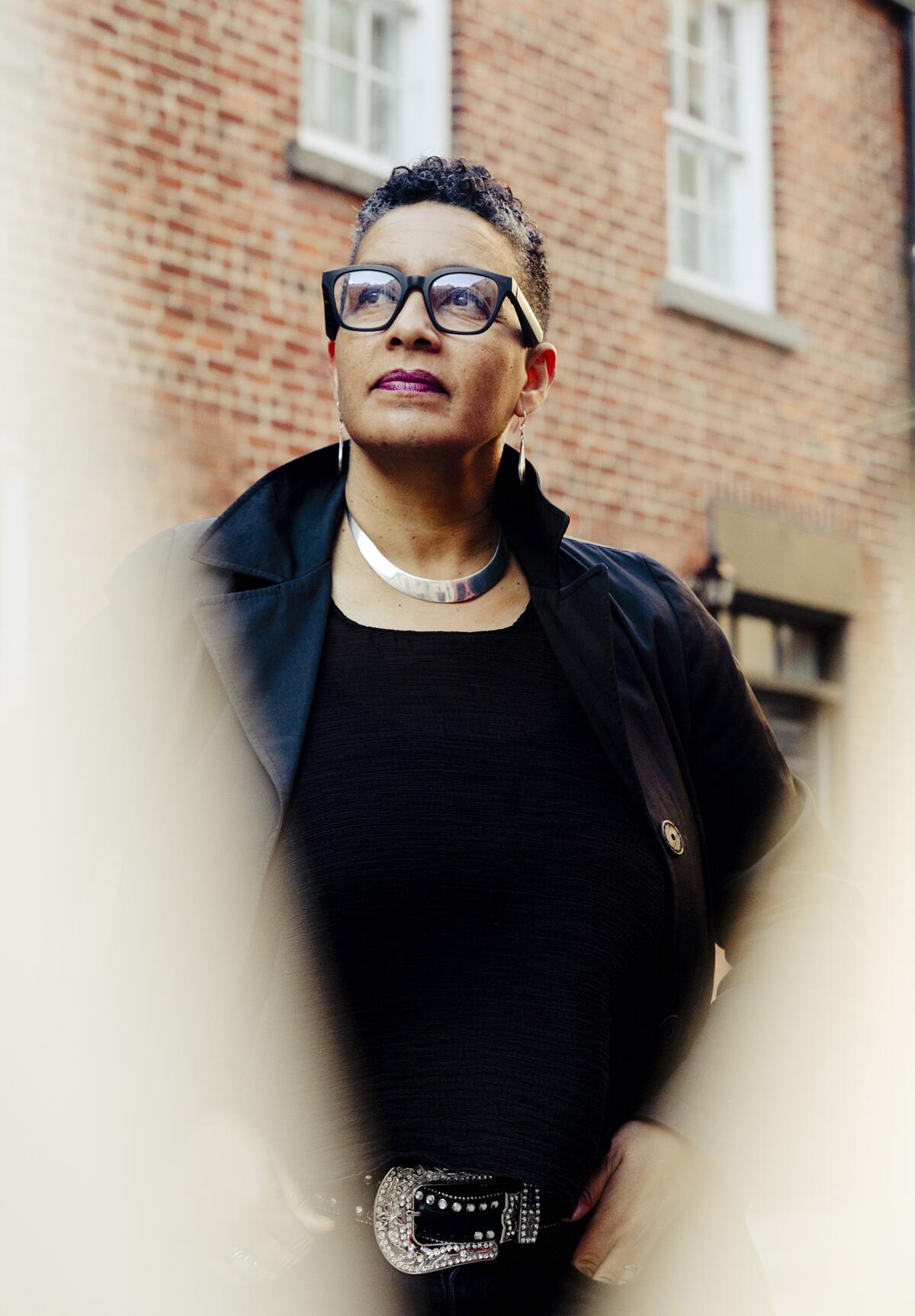
Last year at the Sundance Film Festival, news of Tabitha Jacksonâs hiring as the festivalâs new director was heralded as a trailblazing moment of firsts: Jackson would be the first woman, the first person of color and the first non-U.S. born leader of the prestigious Utah film festival, replacing outgoing predecessor John Cooper.
In February, she began her new role, ready to put her stamp on the annual event. In March, the COVID-19 pandemic hit.
To say her inaugural year heading the most influential film festival in America was rife with unpredictable challenges is an understatement. But on Jan. 28, running a seven-day edition largely online and packed with virtual screenings, Q&Aâs and events, Jacksonâs tenure as Sundance director â which follows award-winning work as a filmmaker and six-year stint as director of the Sundance Instituteâs Documentary Film Program â will kick off with a renewed sense of purpose for the Park City event run by the Institute founded more than 40 years ago by Robert Redford.
âThe first question, given the pandemic, was: âShould we even be doing the festival?ââ Jackson recalled this week, back in Manhattan ahead of the fest after spending nine months out of state because of the pandemic. âThe answer very quickly was, âYes.â If we believe in the role of artists, the independent voice and community then a film festival is not a bauble or a distraction or a frivolity. Itâs actually a necessary coming together, in whatever way is safe, to make sense of the moment.â
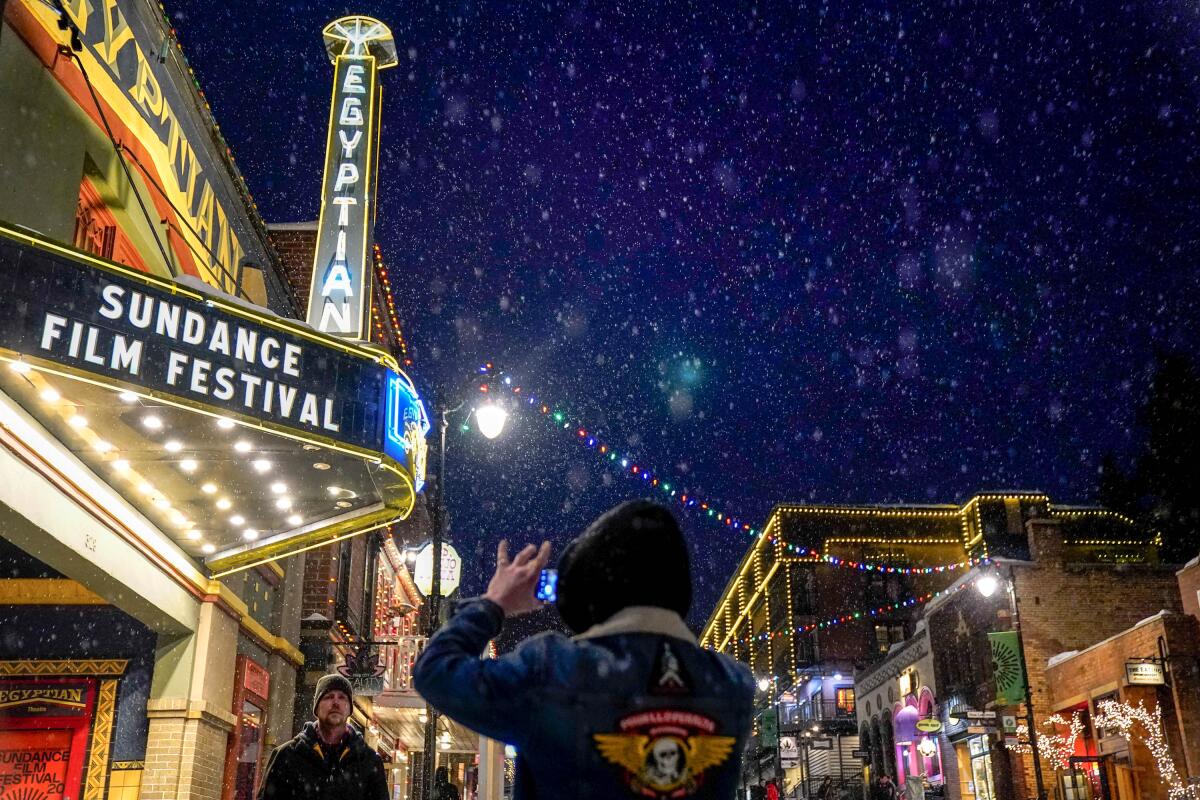
This is your first Sundance Film Festival as festival director. In your own words, who is Tabitha Jackson?
I am a 50-year-old British woman of African descent, Nigeria to be specific. I think that, plus the fact that Iâm adopted, plus the fact that Iâm a child of divorced parents, means that I have from an early age wanted to understand what exactly was going on. What art has done and what stories have done and what cinema certainly does is to help us make sense of things. So Iâve been a curious lover of the arts and culture as a way to understand what this all means.
Whatâs your earliest movie memory?
I can recall it vividly, because when my dog died when I was 7, it was my first encounter with death, and my dad decided to cheer me up and take me to the cinema. We saw a film called âWatership Down,â which was an animated film based on the book, and it traumatized me for the rest of my life. Thereâs rabbit on rabbit violence, there are claws and blood and yapping dogs, and a rabbit dies in it. I couldnât believe Dad would take me to see that film. And then somewhat poignantly, my dad died just a few years ago, and I was instantly transported back to that film because he had given me a way of understanding death and loss. So âWatership Downâ scarred me for life.
Well, thatâll do it.
Itâs interesting how many people say the film that had the most powerful influence on them was one they had seen as a child. That stays with me, because it matters what we do. It matters what children can see, and it also matters [to] children, who perhaps donât feel, as I didnât, like they fit in anywhere â you suddenly feel connected to something bigger than your immediate circumstances.
How did your 25 years as a filmmaker and your work heading the Sundance Instituteâs documentary program inform your approach to this new role?
The same animating impulse that made me want to make films and that made me want to support filmmakers is what drew me to this extraordinary privilege and responsibility of running the Sundance Film Festival â which is the independent voice and calling attention to things in the world or things in the world of the imagination that illuminate who we are, and why we do things, and what the consequences of that are. And, the festival as a place of discovery: People arenât just tuning in for things they already know they like, theyâre coming to see who are the voices and what are the ideas that are going to be in the culture for the next year, and thatâs thrilling.
If we believe in the role of artists, the independent voice and community then a film festival is not a bauble or a distraction or a frivolity. Itâs actually a necessary coming together, in whatever way is safe, to make sense of the moment.
— Sundance Film Festival director Tabitha Jackson
You were announced as incoming festival director on the last day of the 2020 festival. A little over a month later in March, the COVID-19 pandemic was prompting shutdowns across the U.S. When and how did you and your team begin responding to these changing circumstances?
I got handed the keys to the festival in February. In March, it was already clear that the pandemic was beginning to hit the U.S. In April and May, whatever we thought we might be able to do, we were going to have to rethink. At that point, we said, âLetâs scenario-plan: Thereâs a scenario in which the pandemic will ease and we can gather in Utah, full expression; thereâs a scenario in which we wonât be fully out the other side but we can still have a mixture of Utah and an online experience; and then the third scenario was, the pandemic is still raging â all we can do, if weâre going to have a festival, is build a festival platform.â In order to accommodate all three scenarios, we had to plan for everything. We started building the [online] festival platform really quickly.
Those three scenarios were three levers we continue to slide up and down, depending on the situation. Weâre now in a moment where, for public health reasons, weâve dialed up the festival platform, but weâve also got an incredible network of partnerships with independent art houses across the U.S. who are part of putting on the festival with us. Where they can show films safely, maybe through drive-ins, depending on where they are, they will. And where they canât, they will be expressing through this festival platform.
As we came through an uprising for racial justice, as we came through an assault on democracy in the last few weeks, and as we go through the inauguration, weâll be watching with our hands on the levers to see what we can do. But what we do know is, weâre going to have a festival with 70 features, 50 shorts, a New Frontier program, incredible talks and events that will stand the test of these times, hopefully.
Among the key features set to premiere at the 2021 Sundance Film Festival are new movies featuring Tessa Thompson, Ruth Negga, Tiffany Haddish, Constance Wu and Nicolas Cage.
As you note, it wasnât just a pandemic you were contending with as you planned this yearâs festival. How did real world events affect how you decided to meet this moment in history?
What has been essential in trying to meet this moment has been an absolute clarity of purpose. When weâre inviting people to come together around this [festival] â when thereâs such difficulty in simply being in the world in these times â then we have to know why weâre doing it. And weâre doing it because of our commitment to the independent voice. Itâs a healthy part of a functioning civil society. Thatâs what this festival stands for.
The other thing we needed was absolute flexibility to not hold anything as unchangeable or sacred. Even something that would seem so fundamental like âWe have to be together in person for this to have any point.â No, we donât. We have to come together as a community in a way thatâs safe and use some of the tricks or experiments weâre trying this year to give us that energy and connection that is real and in the moment.
Coming into this job, what was your vision for how you wanted Sundance to stand out from Sundances of the past?
I came into this job recognizing the role that Sundance has played in the culture. And the long tail and the deep work that Sundance has been doing for almost 40 years, and that this festival â which began as a scrappy little counterintuitive film festival in Utah in the winter â has become a kind of barometer at the beginning of the year.
However, what the pandemic did was make it clear that it was going to need to break the festival in order for the festival to reform in a way that could meet this moment. What we want to discover through putting on this festival and doing experiments is how we want to emerge. We need to play a role in understanding what the importance of film festivals are, not simply in this moment but going forward into a different kind of a world. Film festivals are always, I think, going to play the part of elevating artists and audiences that may not be elevated if they were simply left to the demands of the marketplace. So we can be additive and expansive in terms of the kind of work and therefore the kind of makers that are being sustained.
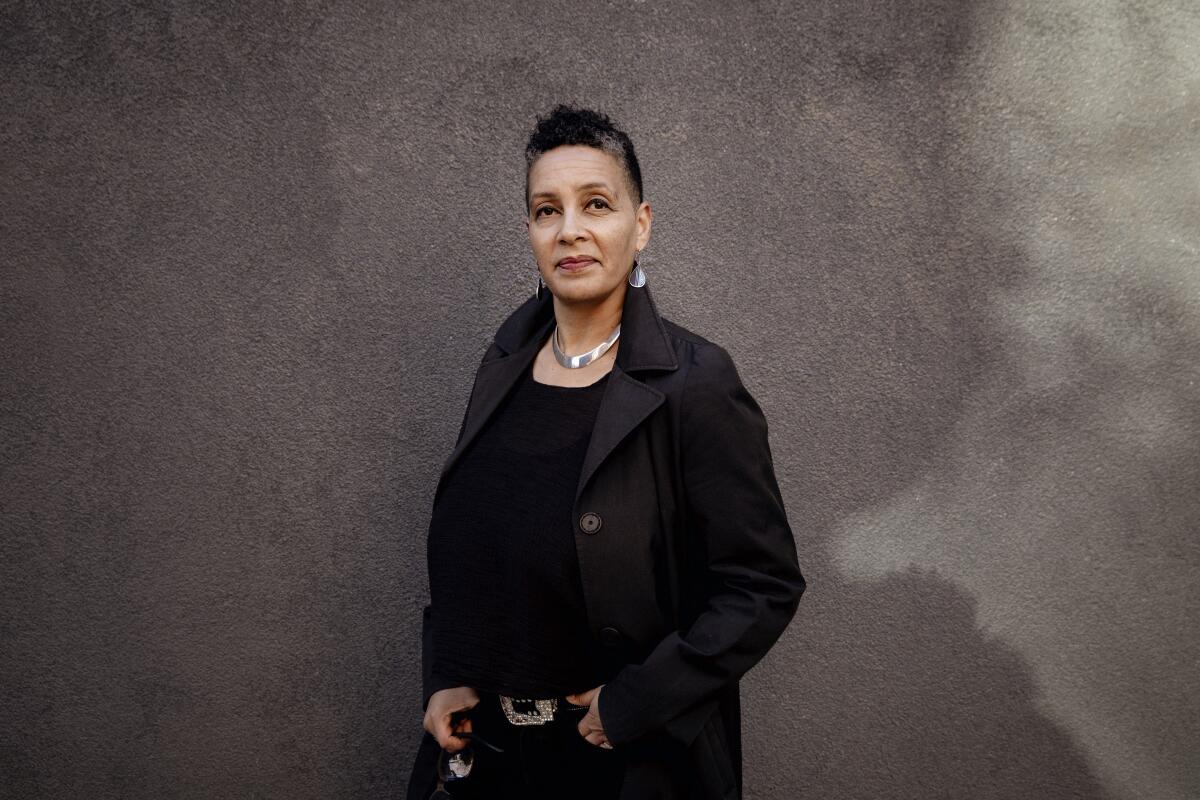
How do you see the role of film festivals within the larger industry landscape? Without Sundance and film festivals like it, where would Marvel find filmmakers to direct its big-budget superhero movies?
This work of nurturing and identifying, supporting independent new talent as they find their voices and learn the art and craft of filmmaking, that is not by and large done by studios or the big streamers â they have a different role to play which is equally valuable, but one without the other doesnât work. We must fight to make sure that the ecosystem is sustainable and balanced. We want to be part of that balance, and we can fight from a particular position in that ecosystem which is fighting for the artists and the freedom of their independent expression.
One of our poster children, if you like, would be someone like Ryan Coogler, who was supported by the institute. Obviously a remarkable talent, he made âFruitvale Stationâ [with] his values, his artistry, his vision. Perhaps because that film was so well received at Sundance and other places, he could be identified by the studios and go on and make âCreedâ and make âBlack Panther.â If you look at âBlack Panther,â those same values he has maintained in the studio system with squillion-dollar budgets and huge stress on him. And that work is seen by way more people than our independent community. Thatâs success. If we can replicate that trajectory, ideally with way more women and people of color, then thatâs the balance that we should find.
How much did the pandemic affect the number of submissions this year?
We genuinely didnât know if it was going to be feast or famine. Production had stopped. Filmmakers were not only without money, some of them [were] without the means to produce the work. They were also getting sick; they were going through what everyone else was going through, or they were on the frontlines of the uprising. We had no right to expect healthy submissions, but much to our amazement, we got them. The submission numbers were only slightly less than they have been in previous years, and the downturn was mainly from the U.S. side.
Deciding whether to go, whether to wait, whether to release on distribution platforms â I donât envy any of the filmmakers or rights holders who had to make those decisions, and it makes us more moved that we were trusted with so many films. We also wanted to ensure that if we were going primarily on the festival platform, that we could generate the energy and buzz and eyeballs and sense of a âmomentâ that Sundance has been able to do in the past that would justify that trust on behalf of filmmakers.
I donât think next yearâs going to be any easier, to be honest. Next year, perhaps, might be the actual year when we see the downturn. Just [because of] the lack of production. Because we do [in the 2021 edition] have films that were made before the pandemic; next year, weâre not going to have that.
Going virtual this year is a necessity, of course. But are you looking at this yearâs approach with an eye toward ideas you might implement in the future?
Even the word âvirtualâ doesnât do it justice. We have designed the festival so itâs still a festival of discovery â more than half the program is made by first-time feature filmmakers â so youâre still coming to this festival to discover this work. What we get from this online experience is for the first time, the ability to reach so many new audiences â which is incredibly important to us for the lifeblood of the festival and the artists and their work. Coming to a new audience who can encounter independent film for the first time in this way, and a variety of audiences who perhaps could never have got to Park City, whether for geographical or financial or physical reasons â they will be able to have their first Sundance this year from wherever they choose to be.
The Sundance Film Festival has revealed the films for its upcoming 2021 event, a mostly virtual hybrid reconfiguration of the festival.
This yearâs lineup of panels and artist conversations will also, notably, be free. What aspects of this yearâs festival are you excited for people to explore?
Thereâs so much, and all thatâs required is signing onto the festival platform. Another thing Iâm very excited about is the New Frontier experience, which has always been this place of cutting-edge technology meeting the most imaginative storytelling. Itâs like New Frontier was born for this moment. Instead of being in a crowded space with lines to get in, they have built this incredible space â in space â that is going to be an amazing way to socialize. From your laptop or from your VR headset, you can go in as an avatar and using proximity audio and your webcam you can bump into people like you would do at the normal festival.
We talk of Sundance as a space of imaginative possibility. It really is this year. Weâve had to really stretch to get to that place of, instead of saying, âItâs a shame that we canât,â instead say, âWhat if we tried?â And it went from being a slightly depressing experience thinking about what we couldnât do in terms of last yearâs festival to a kind of exhilarating experience of, âOh, my God, weâre really going to try this.â So itâs a big experiment, this festival.
Youâve now encountered challenges you couldnât have possibly anticipated when you first took the job. What is something that has helped you get through these many uncertain months?
Breath. I mean that in a literal sense and a metaphorical sense. I spent most of the pandemic in Connecticut, a place Iâd never been before â thatâs where I ended up in quarantine and then in lockdown â and the ability to breathe and be in nature, which has always been part of the Sundance philosophy in the labs, was really meaningful. And it was particularly meaningful as that phrase, âI canât breathe,â was being uttered in way too many devastating incidents. The fact that I could breathe, and the fact that the air was so clear â thatâs what got me through.
More to Read
Only good movies
Get the Indie Focus newsletter, Mark Olsen's weekly guide to the world of cinema.
You may occasionally receive promotional content from the Los Angeles Times.
